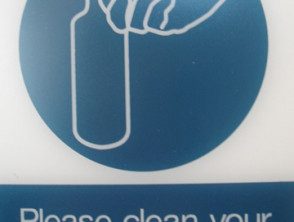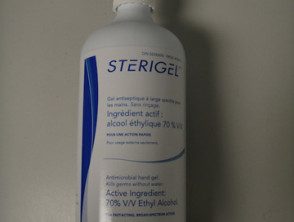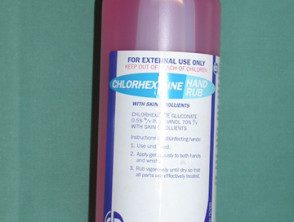Sanitizer
A hand massage is a gel or liquid containing antimicrobial agents that decrease the number of microorganisms present in the hands. The antimicrobial agents in most hand sanitizers are alcohols (ethanol, isopropanol, and n-propanol), available in different concentrations. Because hand rubbing does not remove organic material, it cannot be used if hands are visibly dirty. Hand massage is sometimes called a disinfectant.
Ethanol, at a concentration of 60% or more, is effective against:
- Plus bacteria - Including multi-drug resistant bacteria such as MRSA
- Mushrooms
- Some viruses, such as influenza virus, herpes simplex virus, rotavirus, and HIV. Hepatitis Viruses and enteroviruses may require a higher concentration of alcohol to be reliably inactivated.
Alcohol-based hand sanitizers have limited effectiveness against bacterial spores (for example Clostridium difficile), protozoan oocysts and certain viruses.
Superoxidized alcohol-free solutions can also be used for hand cleaning.
Rub your hands

Sanitizer

Sanitizer

Sanitizer
Normal household soap
Social hand washing with non-antiseptic household soap removes bacteria and viruses by physical / mechanical means. Household soap acts as a detergent to help kill free-sticking bacteria and viruses; microorganisms are not really killed by these products. Disadvantages of hand washing with this method include:
- Contact with contaminated faucets, towels, or the edge of the sink after washing hands
- Bacteria adhere more easily to wet hands, increasing the risk of contamination.
Sanitary environments
Healthcare settings traditionally use hand washing chemicals such as chlorhexidine in addition to alcohol. These products have antimicrobial / antiseptic properties and are effective against many bacteria, fungi, and viruses.
Most of the studies comparing the effectiveness of hand massage to regular hand washing have been done in healthcare settings. These data show that hand massage is at least as effective as traditional hand washing with chemical hand washing products in reducing bacterial counts on the skin and reducing hospital-acquired infections. Additionally, hand sanitizers are less irritating to the skin than traditional hand washing chemicals.
Side effects of hand massage.
It is rare to experience side effects from using hand massage. Evidence shows that hand rubbing is less harmful to the skin than soap and water. However, possible skin reactions to hand rubs include:
- Irritating Contact dermatitis
- A brief stinging sensation if the skin is dry or cracked
-
Allergic contact dermatitis, usually to a preservative.
-
Contact urticaria to ethanol or other ingredient.
These reactions are more likely in those with existing dermatitis or sensitive skin.
Advantages of rubbing hands
- Easily Accessible - Hand rub can be located in areas that are not suitable for sinks.
- Rubbing your hands is easy to carry when you are away from home; No drying facility needed.
- They are easy and quick to use.
- They cause less dryness and irritation than soap and water.
- They are more effective than normal household soap and water for hands that are not visibly dirty.
- There is less chance of cross contamination with the surrounding objects.
- They are at least as effective as hand washing chemicals used in healthcare settings.
Disadvantages of rubbing hands
- Young children should be supervised while wearing, such as ingestion it can be harmful
- The effectiveness is reduced if the product is not used according to the instructions.
- Rubbing the hands has limited effectiveness against some microorganisms.
When to use hand rub
- At home, regular household soap is sufficient to prevent the transmission of infectious diseases.
- Hand rubbing can be used when there is no access to sinks and clean running water.
- Hands should not be rubbed when the skin is visibly dirty or contaminated with blood or other body fluids.
- Hand massage is increasingly recommended in healthcare settings.
How to use hand massage
- Rub your hands should be applied to dry hands.
- Apply at least 3 ml, or enough to completely moisten hands.
- Rub hands together covering all surfaces for at least 10 to 30 seconds until hands are dry.

